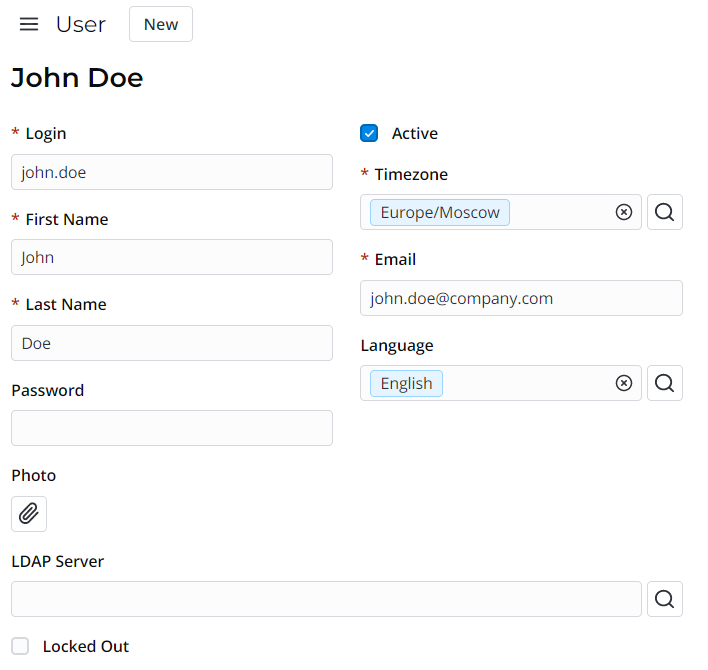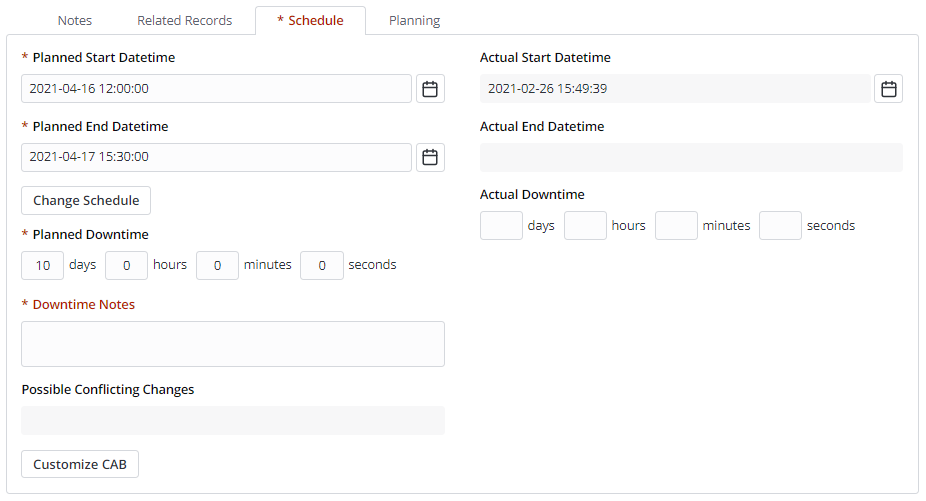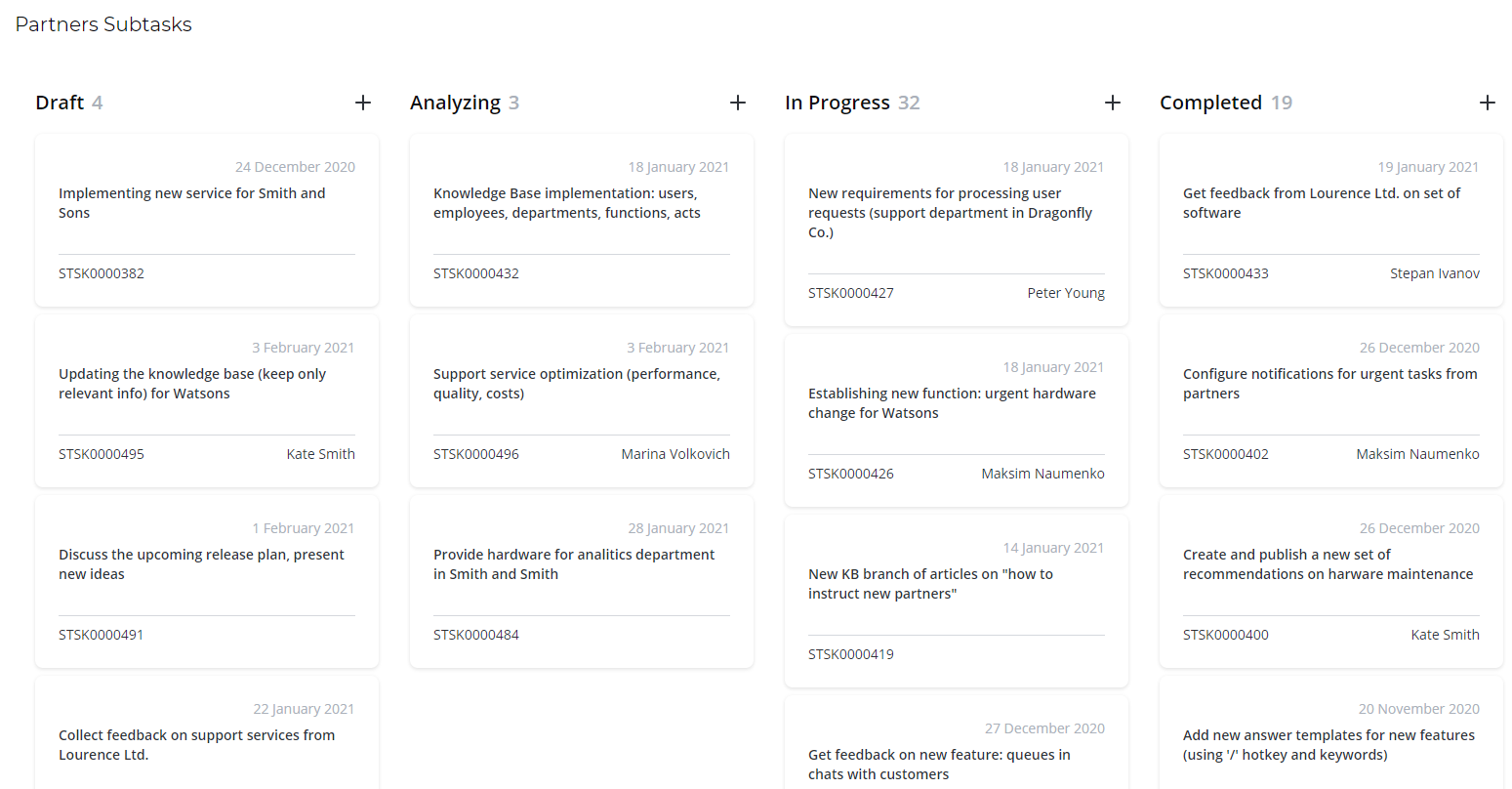You are viewing an old version of this page. View the current version.
Compare with Current View Page History
« Previous Version 4 Next »
Record is a minimum independent unit of SimpleOne platform. It is basically a container of information from table columns. In other words, record is a set of field values. In the list view, it is displayed as a row. In the form view, it is displayed as a form with populated fields.
For example, a record in the User (user) table is displayed as this:
form view

list view
Every record has its unique ID that is used by the system in scripts, properties, and others. As a rule, in agent interface records have human-readable titles/names.
Records in forms
In SimpleOne, a record form may be divided into three parts:
- Main area – contains the title and fields of the record. Every record has this structural element. It can also include sections.
- Related Links area – contains the link UI Action, a hyperlink text. It can execute a script or lead to a defined page.
- Related Lists area – contains lists of records from tables connected with the current one.
Sections
Sections allow arranging fields in the form view by dividing them into tab pages. Use them for:
- structuring complex tables containing a lot of fields
- sort filed according to your needs: by process stages, by data type, by users involved, etc.
- to draw user's attention to important fields.

See the Form Layout article to learn more.
Activity Feed
Activity Feed module allows tracking field changes and communicate with involved persons.

See the Activity Feed article to learn more.
Records in lists
In SimpleOne, a list view includes the following elements:
- Gear icon
 – click on this icon to change the set and order of columns displayed.
– click on this icon to change the set and order of columns displayed. - Information icon
 – click on this icon to see the preview information about the record. See the Customizing portal and agent views article to learn more.
– click on this icon to see the preview information about the record. See the Customizing portal and agent views article to learn more. - List of records – records included into the table displayed in rows. You can select records using the checkboxes at the right.
- Cell – the column value of a certain record. You can change the value using the DOC0000035 - Records.
- Columns – names of columns of the current table. You can change the set and order in the list layout and call the context menu.
- Search boxes – click the magnifier icon at the left of column names to open the list search boxes. Here, enter the value which a column should contain to find certain records. You can as well use the Condition Builder to filter records.
Inline editing
You can edit field values of records in the list view. In other words, you do not need to open a record to change a fields value.
To edit a field in the list view, follow these steps:
- Double-click on the value you need to change.
- Depending on the type of chosen column:
- enter the value
- select value from the drop-down list
- select record from the dictionary by clicking the magnifier icon

- define the date and time by clicking the calendar icon
 .
.
- Click the check mark icon
 to apply changes.
to apply changes.

Filtering
See the Condition Builder article to learn more.
- Condition Builder
- list search boxes
in the column name context menu (click on the column name to call the context menu)
Sort ascending – sorts records from smallest to largest (including case, when choices have numeric value), from A to Z, from earlier dates to later dates.
Sort descending – sorts records from largest to smallest (including case, when choices have numeric value), from Z to A, from later dates to earlier dates.
Group: {column} – divides records into groups by the selected column.
in the row context menu (right-click on the cell to call the row context menu)
Show Matching – equals to condition: [Column] is [value]
Filter Out – equals to condition: [Column] is not [value]
Group By – divides records into groups by the selected column.
UI Actions
See the UI Actions article to learn more.
Views
See the Form Layout and List Layout articles to learn more.
Taskboards
Records in taskboards are represented as cards.

See the Taskboards article to learn more.
/
СТАТЬЯ СОДЕРЖИТ БИТЫЕ ССЫЛКИ
А ТАКЖЕ ССЫЛКИ НА НЕОПУБЛИКОВАННЫЕ СТАТЬИ
ПРОВЕРИТЬ
- No labels